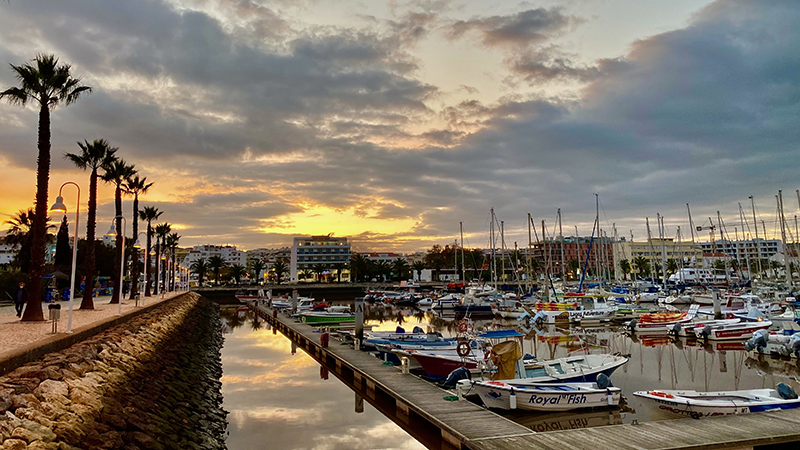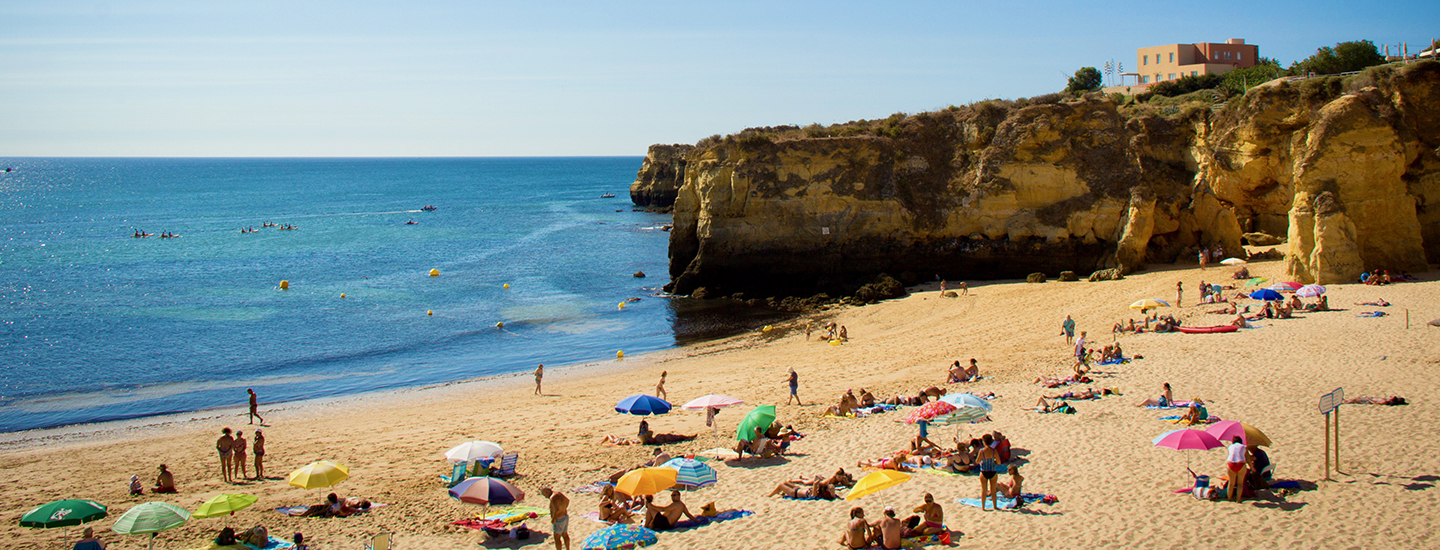
It is a fine day to see the end of the world. Rolling out of Lagos in a small, open boat, the sun is fighting with the clouds, the wind at our backs, the sea rolling just enough to remind me that beyond the horizon is more endless ocean.
A moment ago, we left the protection of the harbour, my guide, Luis, waving to a family of squid fishing friends before we round the breakwater. Soon, our little craft will crash through, into the Garage, and also the Living room, and the Chimney, all grottoes along the way. But at this moment, Luis points to a far-off headland, noting the dark line of Cape St. Vincent and the surf town of Sagres. “Back in history, they believed that’s where the earth finished,” he says. “But we won’t go that far, not today.”
I’m in Portugal’s Algarve, which occupies the southern reaches of the country. Lined with beaches and cliffs, and hidden coves and historic towns like Lagos, it’s a region both compact and diverse—much like Portugal itself. Staying here in the country for several weeks, I have the chance to go deep, exploring three distinct areas, each one with its own character, personality, tastes and highlights.
It all starts when I land in Lisbon.
Perhaps Europe’s most underrated city, this capital city may lack the icons—no Eiffel Tower, no Brandenburg Gate—but brings surprises at every turn. The cobblestone core is easy to walk and I spend hours strolling down the gentle descent of Avenida Liberdade, the broad boulevard that bisects the heart of town, making random decisions about which small lane in Baixa to explore next. Many times, my journey on foot takes me to the waterfront, making my way along the Tagus River. The broad waterway is always busy with boats and live musicians provide a soundtrack, with the smells of little food stalls selling prego and bifana hanging in the air, all the way to the Tower of Belem.



